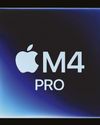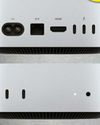Ignoring the gimmick of its squeezy sides, this is a fast phone with a superb camera – but it’s too expensive.

When HTC teased the U11, it declared a squeezy revolution. The truth is more prosaic: the HTC U11 is a great phone, but that’s nothing to do with the fact you can squeeze it.
Here’s how it works. Squeeze both edges of the bottom half of the phone, exactly where you’d usually be holding it, and an action will occur. By default, one squeeze launches the camera app, even when the phone is locked; the second captures a photograph. That may sound useful, but squeezing the phone makes it hard to keep the camera lens still. Fortunately, you can change the behaviour. For example, it could be a shortcut for the voice-recording app, settings or activating the torch. It’s also possible to launch apps with a long squeeze if you want to set up two different shortcuts.
Not that the squeeziness is obvious to the naked eye, as the U11 looks like a normal smartphone. The most eye-catching thing about it is the backplate, which dazzles with a mirror-finish rear panel topped with glass. This shininess comes at a cost: I’ve never come across a phone this prone to fingerprints.
Elsewhere, most things are as you’d expect. The fingerprint scanner sits below the screen, while both the power button and volume rocker are on the right-hand side, and the memory card slot is built into the same tray as the SIM card holder.
This story is from the September 2017 edition of PC Pro.
Start your 7-day Magzter GOLD free trial to access thousands of curated premium stories, and 9,000+ magazines and newspapers.
Already a subscriber ? Sign In
This story is from the September 2017 edition of PC Pro.
Start your 7-day Magzter GOLD free trial to access thousands of curated premium stories, and 9,000+ magazines and newspapers.
Already a subscriber? Sign In

Microsoft makes funeral plans for Windows 10
Extended support tariff and nag screens are ready for the October deadline

Are delivery drones finally ready for take-off?
More than a decade in the making, Amazon is again set to run a trial of its delivery drone in the UK. But there are better uses for delivery drones, explains Nicole Kobie

Sony PlayStation: the game changer
David Crookes looks at how the first PlayStation turned the gaming world on its head, impacting rival console manufacturers, videogame developers and the perception of games themselves

Apple M4 series
Don't expect revolution, but this is a notable all-round upgrade in performance for all members of the series

What is NUI?
Forget cryptic buttons and fiddly menus-Steve Cassidy explores a more intuitive approach to user interactions

Samsung Galaxy Chromebook Plus (2024)
Sleek, stylish and packing a superb OLED panel, this is the best high-end Chromebook since the Pixelbook

How can I make my IT truly sustainable?
It's not just about setting computers to sleep overnight; Nik Rawlinson finds out how to minimise your overall environmental impact

Apple Mac mini M4
Half the size of its predecessor yet packing far more power, this is the biggest Mac upgrade of the year

UPGRADE TO BUSINESSCLASS WI-FI
A HOME OFFICE DESERVES A PROFESSIONAL NETWORK. DARIEN GRAHAM-SMITH MAKES THE SWITCH

GIFTS FOR GEEKS 2024
IN OUR ANNUAL-ROUNDUP OF GIFT IDEAS FOR PEOPLE IMPOSSIBLE TO BUY FOR, WE COVER EVERYTHING FROM CHESS SETS TO PORTABLE BLUETOOTH TURNTABLES